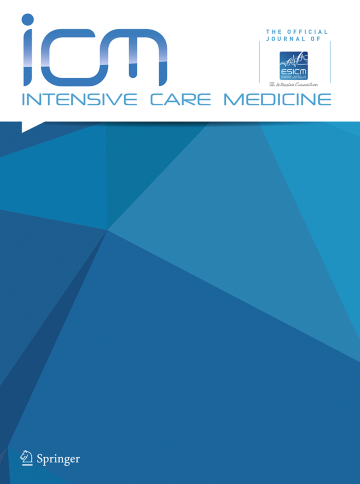最新进展:AKI后肾脏恢复——从基础科学到临床实践。
IF 21.2
1区 医学
Q1 CRITICAL CARE MEDICINE
引用次数: 0
摘要
目的:急性肾损伤(AKI)在危重患者中很常见,并与死亡率、慢性肾脏疾病(CKD)和心血管疾病的高风险相关。肾脏不完全恢复或没有恢复的患者风险更高。这篇综述的目的是总结目前对肾脏恢复机制的理解,列出一些不恢复的关键危险因素,并强调知识空白。方法回顾性分析文献中的关键数据。结果AKI的恢复是一个主动的过程。当肾脏损伤较轻时,完全再生是可能的;随着大面积损伤,纤维化开始发生。目前实现肾脏恢复的策略集中在识别损伤机制和尽量减少进一步的损害。肾毒性暴露和各种形式的透析创伤损害恢复。修复不适应的可能性随着年龄和损伤程度/持续时间的增加而增加。肾小球滤过率恢复到损伤前的水平并不能排除肾元丢失和CKD的发展。AKI幸存者的出院后随访很重要,但仍存在不确定性,临床实践也不尽相同。目前正在进行研究以确定药物干预的作用。结论AKI的预后与肾脏恢复密切相关,迫切需要寻找有效的治疗方法。本文章由计算机程序翻译,如有差异,请以英文原文为准。
State of the art: Renal recovery after AKI - from basic science to clinical practice.
PURPOSE
Acute kidney injury (AKI) is common in critically ill patients and associated with a high risk of mortality, chronic kidney disease (CKD) and cardiovascular morbidity. The risks are higher in patients with incomplete or no renal recovery. The purpose of this review is to summarize the current understanding of the mechanisms of renal recovery, list some key risk factors for nonrecovery and highlight knowledge gaps.
METHODS
Narrative review of key data in the literature.
RESULTS
Recovery from AKI is an active process. When damage to the kidney is mild, full regeneration is possible; with extensive damage, fibrosis sets in. Current strategies to achieve renal recovery focus on identification of the mechanism of injury and minimizing further insults. Nephrotoxic exposures and various forms of dialytrauma impair recovery. The likelihood that repair will be maladaptive increases with age and extent/duration of injury. Return of glomerular filtration rate to pre-injury levels does not exclude nephron loss and development of CKD. Post-discharge follow-up of AKI survivors is important, but there are ongoing uncertainties and clinical practice is variable. Research is ongoing to determine the role of pharmacological interventions.
CONCLUSIONS
The prognosis of AKI is critically tied to renal recovery, and there is great urgency to identify effective therapies.
求助全文
通过发布文献求助,成功后即可免费获取论文全文。
去求助
来源期刊

Intensive Care Medicine
医学-危重病医学
CiteScore
51.50
自引率
2.80%
发文量
326
审稿时长
1 months
期刊介绍:
Intensive Care Medicine is the premier publication platform fostering the communication and exchange of cutting-edge research and ideas within the field of intensive care medicine on a comprehensive scale. Catering to professionals involved in intensive medical care, including intensivists, medical specialists, nurses, and other healthcare professionals, ICM stands as the official journal of The European Society of Intensive Care Medicine. ICM is dedicated to advancing the understanding and practice of intensive care medicine among professionals in Europe and beyond. The journal provides a robust platform for disseminating current research findings and innovative ideas in intensive care medicine. Content published in Intensive Care Medicine encompasses a wide range, including review articles, original research papers, letters, reviews, debates, and more.
 求助内容:
求助内容: 应助结果提醒方式:
应助结果提醒方式:


